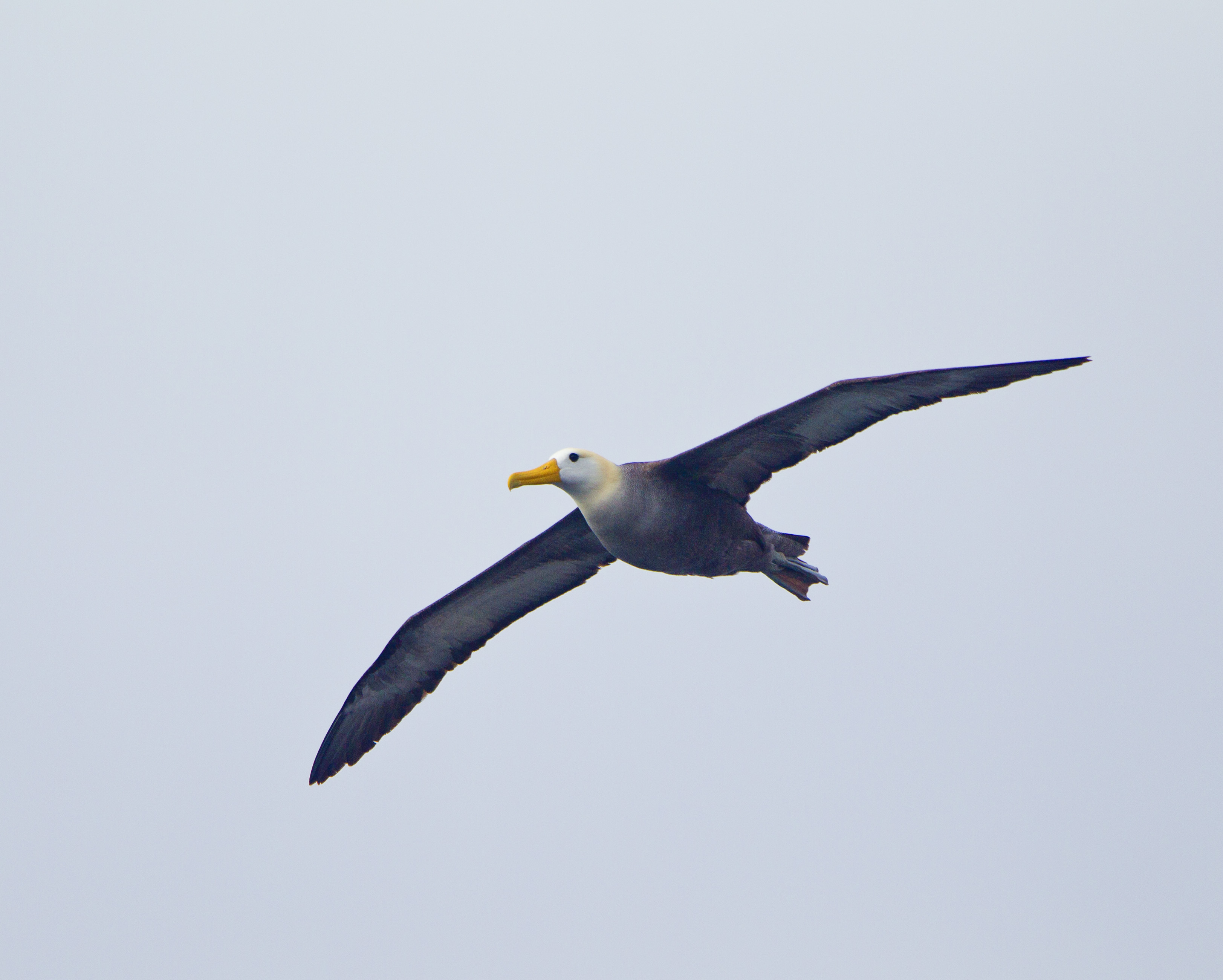
Waved Albatross at sea; photograph by Ken Logan
Carlos Moreno (Facultad de Ciencias Biológicas, Universidad Nacional de Trujillo, Peru) and Javier Quiñones have published in the open-access journal Marine Ornithology on albatrosses and petrels associated with an artisanal squid fishery off Peru.
The paper’s abstract follows:
“We report on the occurrence of albatrosses (Diomedeidae) and petrels (Procellariidae) associated with an artisanal small-scale fishery (SSF) for Humboldt Squid Dosidicus gigas in waters of southern Peru during El Niño 2015-2016 and coastal El Niño 2017. We deployed as observers on a number of fishing trips to assess seabird interactions. White-chinned Petrels Procellaria aequinoctialis and Waved Albatross Phoebastria irroata were the most abundant species observed, followed by Salvin's Thalassarche salvini and Chatham albatross T. eremita, and Cape Petrels Daption capense. The majority of procellariid species (> 60% of total birds) visited while vessels were positioned over the continental slope. Salvin's and Chatham albatross, and White-chinned Petrels, were mostly absent during summer (only 5% and 15% of birds present, respectively), but Waved Albatross and Cape Petrels were present year-round. Thus, the prevalence of each of these species was disproportionate relative to expectation based on non-fishery surveys. All assessed species foraged on offal discards associated with the fishery (~17%), with a higher frequency of consumption among Salvin's (27%) and Chatham (21%) albatross; in contrast, Waved Albatross largely fed on pelagic fish at the surface. Bycatch rate was found to be low: one Chatham Albatross was hooked and released in a hand-held squid jig (0.042 By Catch Per Unit Effort [BPUE] per fishing trip, n = 16). Probably due to El Niño conditions, Waved Albatross were more abundant than expected (43.9% of albatross, and 2.8% of total seabirds observed) and were 1 300-1 400 km farther south than their usual southern limits. We report the first sighting of Southern Royal Albatross Diomedea epomophora in Peru. Bycatch in longline fisheries are a conservation concern, but the magnitude and constant growth of SSFs, especially for Humboldt Squid, needs to be further investigated.”
Reference:
Moreno, c. & Quiñones, J. 2022. Albatross and petrel interactions with an artisanal squid fishery in southern Peru during El Niño, 2015-2017. Marine Ornithology 50: 49-56.
John Cooper, ACAP Information Officer, 23 March 2022

 Français
Français  English
English  Español
Español